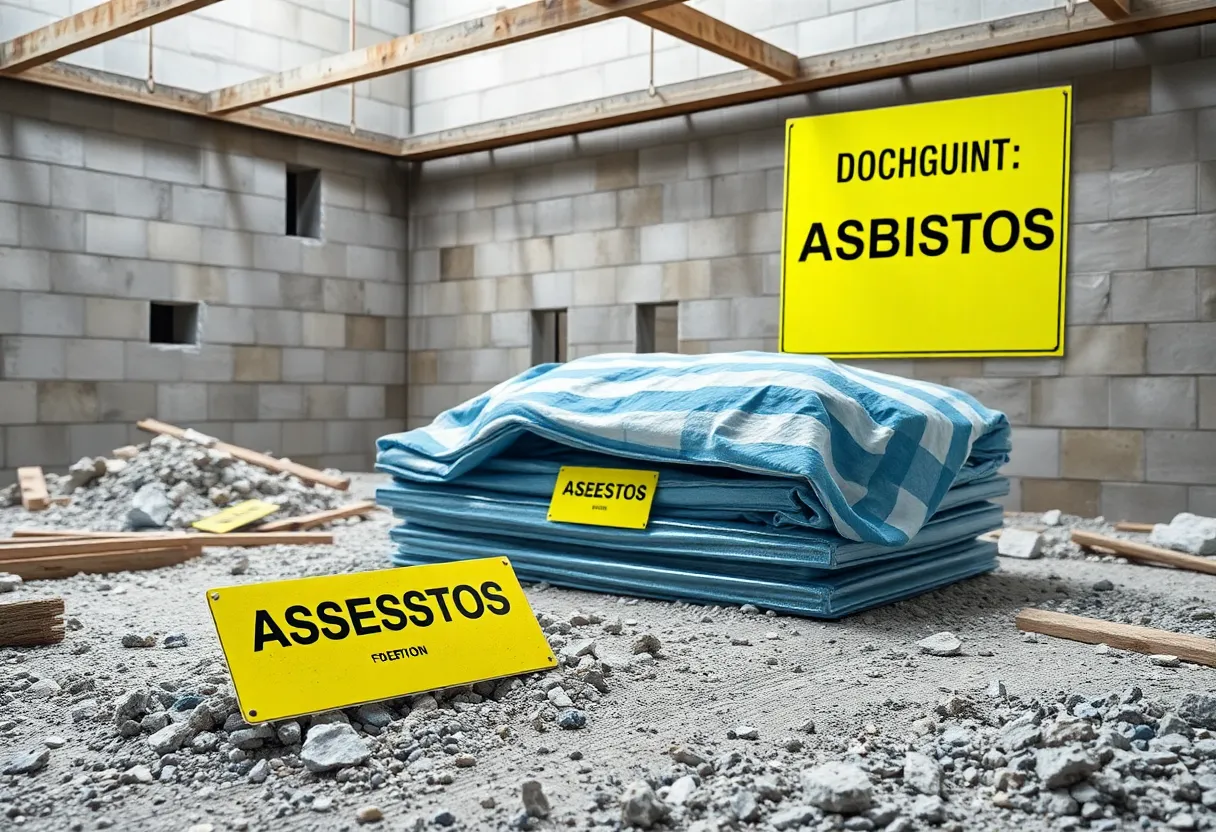News Summary
The ban on chrysotile asbestos in the U.S. is at risk following a ruling that delays the EPA’s ban. Advocacy groups voice concerns about setbacks in public health policy, fearing increased exposure to deadly asbestos-related diseases like mesothelioma. Many deaths from asbestos-related conditions occur annually, prompting calls for strong regulatory action and immediate policy changes to protect public health.
Chrysotile Asbestos Ban in Jeopardy: The Battle for Public Health Continues
The long-sought ban on chrysotile asbestos in the United States faces significant setbacks as a ruling from the U.S. Court of Appeals for the Fifth Circuit allows the Environmental Protection Agency (EPA) to pause litigation for six months. This move follows the approval of a chrysotile asbestos ban in March 2024, allowing advocates to breathe a sigh of relief—yet that relief may be short-lived. Advocacy groups and patients with mesothelioma, a deadly cancer linked to asbestos exposure, fear that necessary changes to public health policy could be further postponed.
History of Asbestos and Public Health Threats
Asbestos, a naturally occurring mineral, has been celebrated for its heat resistance and strength but condemned for its devastating health implications. It has been linked to various serious diseases, particularly mesothelioma, which is primarily caused by exposure to this carcinogenic material. Despite widespread belief that asbestos was banned in the U.S. long ago, it continues to be present in thousands of products, including automotive parts, construction materials, and various electrical components. The legacy of asbestos not only lurks in manufacturing processes but also remains hidden in old buildings, posing ongoing risks of exposure.
EPA’s Chrysotile Asbestos Ban: Progress or Delayed Hope?
The March 2024 regulation was hailed as a significant step for public health advocates who have campaigned for years to eliminate asbestos. Despite its limitations, which some say fell short of a comprehensive ban, it provided critical compliance deadlines impacting the chlor-alkali industry—significantly the last sector importing raw asbestos fibers. Yet, this fragile progress has been met with fierce opposition from industry groups, including chemical manufacturers, who argue that the EPA overstepped its authority by prohibiting the substance entirely instead of merely addressing workplace exposure limits.
Legal Maneuvers: Delays and Dangers Ahead
As part of the ongoing legal battle, the EPA has requested time to reconsider the ban, seeking to engage in a prolonged rulemaking process that could extend up to thirty months. While advocates for the asbestos industry welcome this delay, others voice immense concern. Advocacy organizations, including the Asbestos Disease Awareness Organization (ADAO), view this as a “deadly step backward”, arguing that postponement will prolong exposure to a material responsible for approximately 40,000 deaths each year in the U.S.
Each year, someone dies every 13 minutes from an asbestos-related disease, a solemn statistic underscoring the urgent need for stronger protections. With the EPA’s proposed revisions still in limbo, advocates express alarm that enforcement of any definitive asbestos bans may be compromised during this rulemaking period.
Public Health Advocates Take a Stand
In light of the EPA’s reconsideration, voices from the Environmental Protection Network, a group of former EPA officials, have emerged, criticizing the planned adjustment to regulations. They argue that any delay in enforcement only jeopardizes public health and safety further.
The battle against asbestos and the diseases it causes continues to rage on as new cases of mesothelioma and other asbestos-related conditions are diagnosed daily. Patients grappling with this painful and often fatal disease, along with their families, underscore the critical need for decisive action from the government.
Seeking Support: Resources for Affected Individuals
For those affected by asbestos, whether diagnosed with mesothelioma or experiencing related health concerns, reputable resources are available. Community organizations and legal help resources can guide patients and their loved ones through the complexities of navigating treatment and compensation options, ensuring that they are informed of their rights. Advocacy groups are committed to driving awareness and change, continually pushing for stricter regulations and the ultimate goal of a total ban on asbestos in the United States.
The urgent question remains: Will the United States take adequate steps to protect its citizens from the dangers posed by asbestos, or will the voices of advocacy and public health be drowned out by industry interests? Only time will tell as this legal and health battle unfolds.
Deeper Dive: News & Info About This Topic
HERE Resources
Tragic Legal Battle Unfolds After Mesothelioma Death
Tragic Loss of Former Teacher Sparks Asbestos Concerns
Retired Welder Takes on Asbestos Giants in Landmark Lawsuit
The Complex Reality of Peritoneal Mesothelioma: A Hidden Battle Against Asbestos Exposure
Payouts for Families Affected by Mesothelioma: A Tale of Loss and Advocacy
Hazardous Asbestos Found Near Belfast Bonfire Site
USS Vogelgesang: A Tragic Legacy of Asbestos Exposure
Asbestos Ban Maintained Amid Ongoing Health Concerns
Unmasking the Asbestos Legacy of USS Vogelgesang
Compensation Landscape for Mesothelioma Victims: Understanding the Options



















